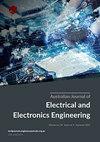风电基准内容错自整定比例导数螺距控制
Q3 Engineering
Australian Journal of Electrical and Electronics Engineering
Pub Date : 2022-09-22
DOI:10.1080/1448837X.2022.2125974
引用次数: 0
摘要
风力发电机组(WT)的动态特性受到风力变化和系统参数变化的影响。为了解决螺距控制问题,提出了一种基于比例导数(PD)结构的基准模型自整定控制器(STC)。该模型还模拟了一些传感器、执行器和系统故障。本文的STC设计以二阶自回归外生(ARX)模型为中心。首先提出了ARX模型的三种识别方法:递归最小二乘法(RLS)、带指数遗忘的最小二乘法(RLS- ef)和带自适应方向遗忘的最小二乘法(RLS- adf)。相比之下,RLS-ADF的性能优于其他两种。STC PD控制器取代了当代的自适应控制方法,将产生的功率固定到额定以上风力的额定功率。其次,通过分析,提出的STC PD控制器对9种类型的故障具有容错能力。第三阶段,在广泛的蒙特卡罗仿真(MCS)中,对包括传感器故障在内的系统参数变化进行灵敏度测试。在存在故障和参数变化的情况下,结果显示与正常情况的偏差最小,表明STC PD控制器的适用性,以保持系统的完整性,除非出现多个故障。本文章由计算机程序翻译,如有差异,请以英文原文为准。
Self-tuning proportional-derivative pitch control for internal fault-tolerance in wind turbine benchmark
ABSTRACT The wind turbine (WT) dynamics are affected by wind variations and system parameter changes as well. To deal with the pitch control problem a Self-Tuning Controller (STC) with Proportional-Derivative (PD) structure has been proposed for the benchmark model (BM). This BM also models some sensors, actuators and system faults. The STC design herein is pivoted on a second-order auto-regressive exogenous (ARX) model. At first, three identification methods for the ARX model are presented: Recursive Least Square method (RLS), RLS with exponential forgetting (RLS-EF) and RLS with adaptive directional forgetting (RLS-ADF). In comparison, the performance of RLS-ADF is better than the rest two. The STC PD controller supersedes contemporary adaptive control approaches to fix up the generated power to its rating for above-rated wind. Secondly, on analysis, the proposed STC PD controller is fault-tolerant for nine types of faults. In the third stage, in extensive Monte Carlo Simulation (MCS), the sensitivity test to system parameter variation is carried out including the sensor faults. The result in the presence of a fault, as well as parameter variation, shows minimal deviation from normal conditions indicating the suitability of the STC PD controller to keep the system intact except in case of multiple faults.
求助全文
通过发布文献求助,成功后即可免费获取论文全文。
去求助
来源期刊

Australian Journal of Electrical and Electronics Engineering
Engineering-Electrical and Electronic Engineering
CiteScore
2.30
自引率
0.00%
发文量
46
期刊介绍:
Engineers Australia journal and conference papers.
 求助内容:
求助内容: 应助结果提醒方式:
应助结果提醒方式:


